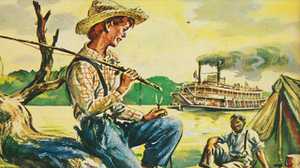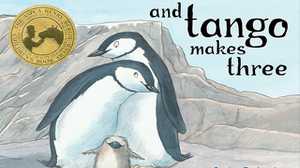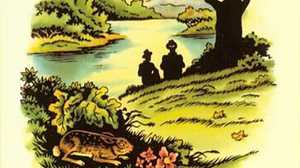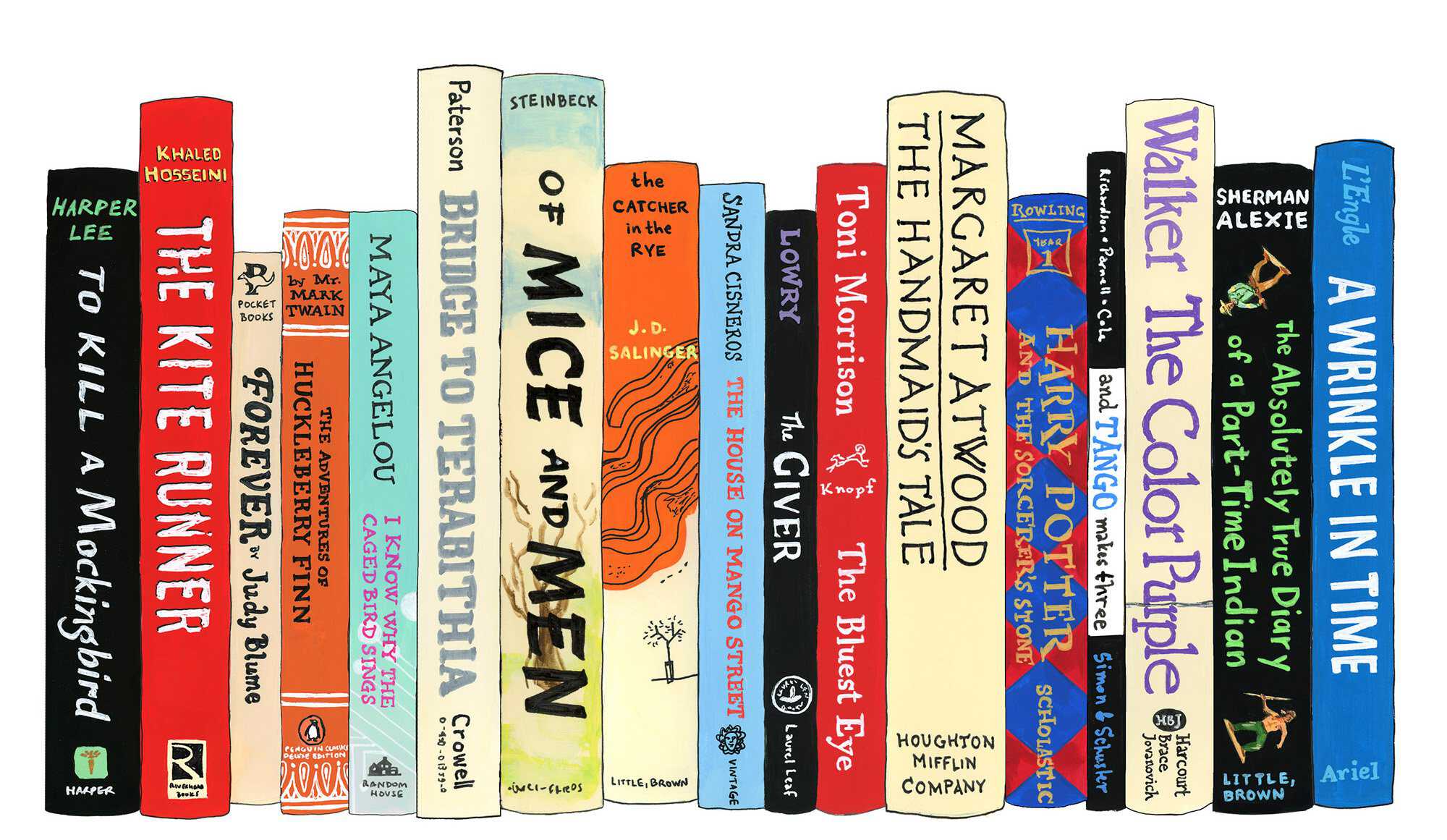
Since 1982, Robert P. Doyle has edited the American Library Association's Banned Books, a collection of thousands of titles that have been subject to censorship challenges. American Experience spoke to him about censorship, intellectual freedom, and the books that test us.
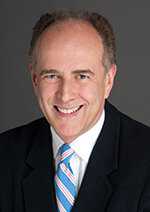
When does the American Library Association (ALA) first start to take a stance on censorship?
It starts in the 1930s, when there were efforts to ban John Steinbeck’s The Grapes of Wrath. That book was published in 1939, and at the time, people found the language shocking and inappropriate. It immediately caused problems in California. It’s banned in public libraries in Kansas City, Missouri, and in New York because of “vulgar” words. Here in Illinois, they burned it.
At that point, the American Library Association realized that the profession needed to adopt a statement or take a philosophical position with regards to censorship. So, in 1939, they wrote the “Library Bill of Rights,” which begins to articulate the library community’s philosophical position regarding censorship.
Let me backtrack a little, and say that this is part of the larger evolving definition of the First Amendment. The First Amendment was adopted in 1791. For much of its history, the Amendment’s protection extended primarily to political expression; and even then, such protection was reluctantly employed by the courts. The Supreme Court and the rest of the country generally ignored this constitutional right until well into the twentieth century. For example, hundreds of people were convicted under the Espionage Act during World War I.
Eventually, that changed. The journalist Anthony Lewis wrote a book called Freedom for the Thought That We Hate: A Biography of the First Amendment that describes the evolution of how we understand and interpret that law. The title of the book is actually a phrase coined by Supreme Court Justice Oliver Wendell Holmes to describe the fundamental nature of free speech. Holmes recognized that supporting the expression of ideas with which we agree is easy; much harder, and more important, is supporting the expression of ideas we condemn. Jailing of socialists and unionists; burning of German-language books during World War I; treatment of communist sympathizers during the Cold War; and even the rights of Nazis to march in Skokie, Illinois, in the 1970s were all issues that came to symbolize First Amendment rights.
For the book community, it wasn’t political content so much as sexual content that created censorship challenges and ultimately brought the issue to the attention of the courts. In the early twentieth century, literary classics such as D. H. Lawrence’s Lady Chatterley’s Lover, Theodore Dreiser’s An American Tragedy, and James Joyce’s Ulysses were found to be obscene and frequently banned, with bans upheld by local, state, and federal district courts. People began to wonder, to ask: What can be printed? What can I say? Can I protest this? With each controversy, the courts and the book community began to interpret those words written back in 1789. Finally, in 1939 the book community took a stance.
Interestingly, The Grapes of Wrath continued to be challenged until the end of the twentieth century. I think the most recent examples of challenges we have are around 1993, but I’m sure it’s still causing some problems somewhere.
The ALA launched Banned Books Week in 1982. Why then?
In the spring of ‘82, the American Booksellers Association (ABA) had their annual conference in Anaheim, California, and the ABA decided to put some books in a cage near the entrance to the exhibit area. Among the books they had locked up were Maya Angelou’s I Know Why the Caged Bird Sings, The Diary of Anne Frank, and Doris Day: Her Own Story. To the public and even some of the booksellers, it seemed baffling or improbable that these three prisoners would have something in common: one book is by an African American poet, one book is by a German Jewish adolescent, and the other one was this all-American Hollywood star.
But these were books that people had complained about: Doris Day’s book because it’s content was so shocking in contrast to her all-American image. The Diary of Anne Frank because it was, quote, “a real downer” — which I know is absurd. And I Know Why the Caged Bird Sings because they thought it preached bitterness and hatred against whites.
The display generated a lot of press attention. And the book community realized that we have not only an opportunity, but a responsibility to engage the American public in a conversation about the First Amendment as it relates to books and literature. A coalition was formed immediately with the authors, publishers, and major distribution centers (bookstores and libraries) in the U.S. to draw attention to the importance of the freedom to read, to publicize threats to that freedom, and to provide information to combat the lack of awareness.
As part of that effort, the ALA began publishing the Banned Books Resource Guide. How did you come to edit it?
At that particular time, I was working for the ALA in the Office for Intellectual Freedom. I started getting all these calls from reporters saying, “We’re out here in Anaheim and they’ve got these books in a cage, and I want to know what’s wrong with this book, or what’s wrong with that book.” I said, “Give me some time and I’ll try to investigate this.”
So I just wrote a sentence or two that covered the who, what, when, where, and why of a particular book that was being challenged. That way, when people called up, we could say that book caused a problem in whatever year in whatever community for whatever reason. And well, I guess I’ve been doing that ever since.
While I no longer work at the Office for Intellectual Freedom, the office continues that work, in fact, their whole raison d'être is concerned with the topic of censorship.
How do you put the guide together? Has your process changed over the years?
We only document incidents that have been reported in the press. Censorship controversies can get rather emotional and many of the librarians that called our office to report challenges wanted to keep the information confidential because they were scared of losing their jobs. As a result, we only report on a small portion of challenges. There are many cases that never reach that level of media attention. There are some cases where principals or library directors or trustees will just remove the materials and no one hears about it, or they just come to some quiet resolution, but retain the material.
It was pretty simple — we just used newspaper clippings — but it’s evolving now because the media has evolved. Now we aren’t just looking to see if a challenge appears in a newspaper, we’re looking to see if it appears in a variety of other places — electronic newsletters, blogs, or social media—and trying to make sure that these sources are accurate and authoritative.
What kinds of books typically get challenged?
In the United States, the majority of what people object to has to do with sex. After that, I would say issues of language or profanity. And then LGBTQ issues and racism. That’s a very broad characterization, but I think that those are the primary ones. Also, I would say that new ideas/themes/experiences that challenge the current orthodoxy will always be controversial.
For example, when I was growing up, there wasn’t much mainstream gay/lesbian literature for people to challenge. There certainly wasn’t a children’s book like And Tango Makes Three, which is a true life story about two male penguins that have a relationship. Published in 2005, that book was frequently one of the most challenged book for years.
What kinds of misconceptions do you think people have about censorship in the United States?
I don’t think people realize that censorship is current. When I talk about the topic, a common reaction is, “I don’t get it — didn’t censorship end with the Inquisition?” Or, “Wasn’t that only under Mussolini, or Hitler, or Stalin?” Censorship is nothing new; it has always been with us. The urge to censor is primordial. The instinct isn’t limited just to those in positions of power who are driven to control access to information. Censorship happens today and it happens everywhere. It isn’t restricted by geography or ideology.
Nor is it limited to people with certain religious beliefs. People often think it only comes from the religious right, but you can point to many examples from the left. For instance, sometimes there are efforts to remove books that some consider racist. I think one of the best examples of that is Adventures of Huckleberry Finn by Mark Twain. First banned in 1885 as “trash and suitable only for the slums,” challenges to this title changed in the late 1950s because parents objected to racial slurs in the book, and you still have those challenges today.
There is no hate speech exception to the First Amendment, but some might wonder why books like Mein Kampf and The Turner Diaries remain on the shelves. How would you answer them?
Libraries have a responsibility to reflect the diversity of human thought. We cannot ignore the fact that there are thoughts contrary to our personal beliefs. We cannot ignore our history, which contains some very horrible, uncomfortable, and inconvenient facts. Just because a book is in a library, it doesn’t mean that library endorses those concepts or wants to prepetuate that history.
Our primal tendency might be, “The First Amendment is great for everything that I believe in, but not so great for what anybody else believes.” Banning and prohibiting access to books will not deny that those thoughts exist. And it is worthwhile knowing what people have been or are thinking, knowing their strategies, in order to have those difficult conversations, or present those counterarguments.
It’s one thing to have a book on a shelf at the library, and another to teach it in class. Many censorship challenges seem to come from parents concerned about their children’s assigned reading. Do parents have the right to censor the literature their children are exposed to in school?
Yes, of course, parents or legal guardians have not only the right, but the responsibility to determine what is appropriate for their child, but only for their own child. In the classroom, teachers work very hard to inform parents of the assigned readings. While policies and procedures vary from community to community, many schools request a signed approval form. If there is an objection, alternative reading assignments are suggested. Furthermore, if requested, students can even leave the classroom when the book is discussed and go to the school library or other appropriate location to read the alternative assignment. Schools realize that all titles might not be universally accepted and assiduously work to honor parents' wishes, while providing interesting, engaging, and timely materials for today's students.
This interview has been condensed and edited for length and clarity.
Read about The Bluest Eye
Read about Adventures of Huckleberry Finn
Read about The Absolutely True Diary of a Part-Time Indian
Read about And Tango Makes Three
Read about Of Mice and Men
Jane Mount is an illustrator who makes things for people who love books. You can see more of her work at www.idealbookshelf.com.
Originally published September 2017.




